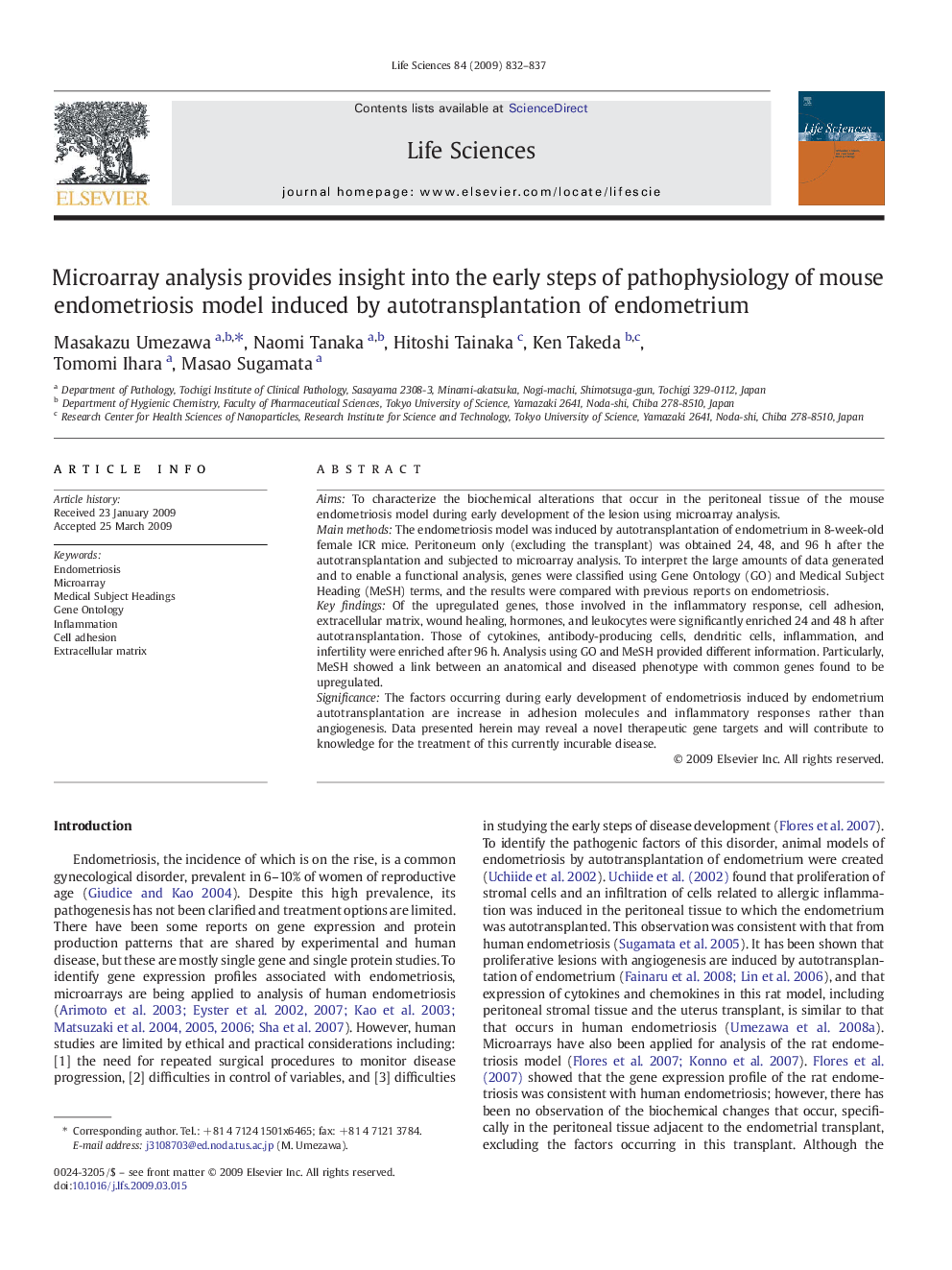| Article ID | Journal | Published Year | Pages | File Type |
|---|---|---|---|---|
| 2553248 | Life Sciences | 2009 | 6 Pages |
AimsTo characterize the biochemical alterations that occur in the peritoneal tissue of the mouse endometriosis model during early development of the lesion using microarray analysis.Main methodsThe endometriosis model was induced by autotransplantation of endometrium in 8-week-old female ICR mice. Peritoneum only (excluding the transplant) was obtained 24, 48, and 96 h after the autotransplantation and subjected to microarray analysis. To interpret the large amounts of data generated and to enable a functional analysis, genes were classified using Gene Ontology (GO) and Medical Subject Heading (MeSH) terms, and the results were compared with previous reports on endometriosis.Key findingsOf the upregulated genes, those involved in the inflammatory response, cell adhesion, extracellular matrix, wound healing, hormones, and leukocytes were significantly enriched 24 and 48 h after autotransplantation. Those of cytokines, antibody-producing cells, dendritic cells, inflammation, and infertility were enriched after 96 h. Analysis using GO and MeSH provided different information. Particularly, MeSH showed a link between an anatomical and diseased phenotype with common genes found to be upregulated.SignificanceThe factors occurring during early development of endometriosis induced by endometrium autotransplantation are increase in adhesion molecules and inflammatory responses rather than angiogenesis. Data presented herein may reveal a novel therapeutic gene targets and will contribute to knowledge for the treatment of this currently incurable disease.
